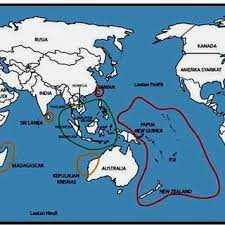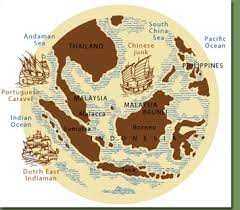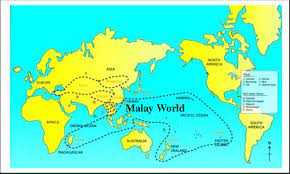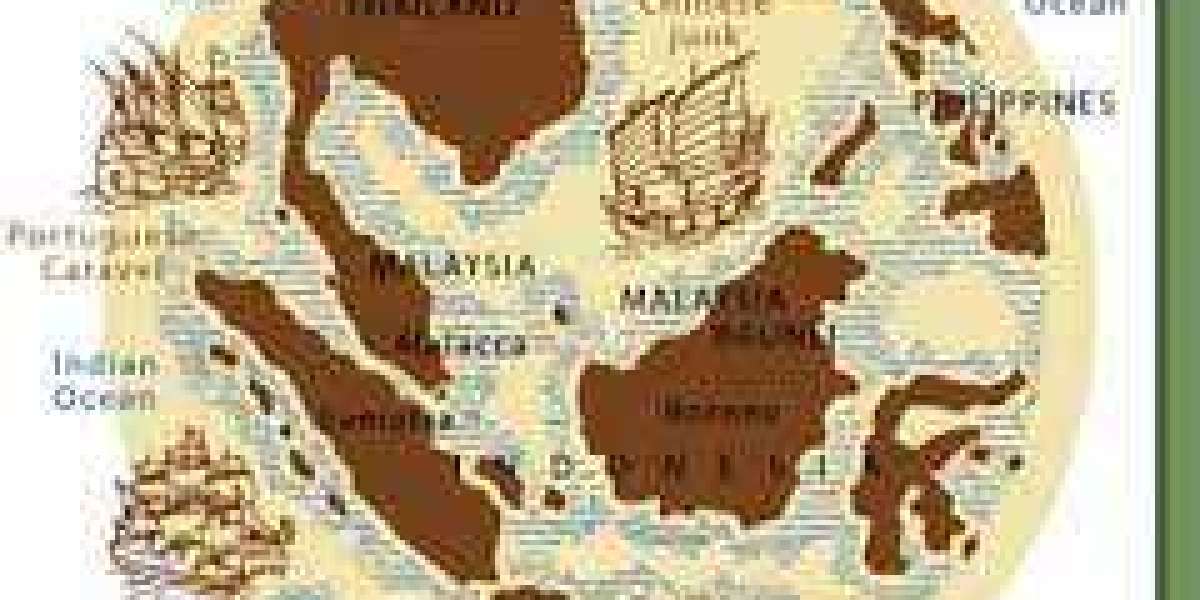
Nusantara is a region in Maritime Southeast Asia consisting of the Malay Archipelago and parts of Indonesia. The region has been home to some of the world's most ancient civilizations, including the Austronesian peoples. The Austronesian peoples are thought to have originated in Taiwan and migrated to the Nusantara region over 5,000 years ago.
Today, the Austronesian peoples make up the majority of the population in the Nusantara region. The region is also home to other ethnic groups, such as the Chinese, Indian, and Arab peoples. The genetic makeup of the Nusantara people is therefore quite diverse.
Studies of the genetics of the Nusantara people have revealed some interesting insights into the region's history. For example, a study of mitochondrial DNA (mtDNA) published in 2009 found that the Austronesian peoples of the Nusantara region are closely related to the Austronesian peoples of Taiwan and the Philippines. This suggests that the Austronesian peoples of the Nusantara region are descended from a common ancestor who migrated from Taiwan to the Nusantara region over 5,000 years ago.
A study of the Y-chromosome published in 2011 found that the Austronesian peoples of the Nusantara region are also closely related to the Austronesian peoples of Taiwan and the Philippines. However, the Austronesian peoples of Indonesia are more closely related to the Austronesian peoples of Taiwan than they are to the Austronesian peoples of the Philippines. This suggests that the Austronesian peoples of Indonesia are descended from a separate migration from Taiwan than the Austronesian peoples of the Philippines.

The genetic evidence therefore suggests that the Austronesian peoples of the Nusantara region are descended from two separate migrations from Taiwan: one around 5,000 years ago and the other around 3,000 years ago. The Austronesian peoples of Indonesia are descended from the latter migration.
The genetic evidence also suggests that the Austronesian peoples of the Nusantara region have intermarried with the Chinese, Indian, and Arab peoples who have also settled in the region. This is reflected in the fact that the Austronesian peoples of the Nusantara region show higher levels of genetic diversity than the Austronesian peoples of Taiwan and the Philippines.
The genetic evidence therefore provides insights into the history of the Nusantara people. The evidence suggests that the Austronesian peoples of the Nusantara region are descended from two separate migrations from Taiwan: one around 5,000 years ago and the other around 3,000 years ago. The Austronesian peoples of Indonesia are descended from the latter migration. The evidence also suggests that the Austronesian peoples of the Nusantara region have intermarried with the Chinese, Indian, and Arab peoples who have also settled in the region.
The genetic makeup of the people of Nusantara is a fascinating subject to explore. It is believed that the first wave of Homo sapiens to arrive in the archipelago were descendants of African populations who travelled via different routes tens of thousands of years ago. This initial migration was followed by further waves from other parts of Asia, such as India and China, as well as from Europe and Australia. This mix of different genetic groups has resulted in a rich diversity among the people living in the region today. By tracing the origin of Nusantara people through genetics, we can gain a better understanding of how these populations have interacted and evolved over time.
The results of the genetic testing showed that the Indonesian population is incredibly diverse. The mitochondrial DNA and chromosome Y tests revealed that more than 3,700 people from 35 different ethnic groups had distinct genetic profiles. This diversity is likely a result of centuries of intermingling between different cultures and populations, as well as migrations from other parts of Southeast Asia. It is this unique combination of genetics that makes up the Nusantara people and has allowed them to develop their own distinct culture and identity.
The findings of the genetic research conducted on the people of Nusantara is quite remarkable. It appears that the Mentawai and Nias people, who inhabit two of the islands in the archipelago, share a common haplogroup with the native people of Formosa. This suggests that there may have been a migration of Austronesian speakers from Formosa to these islands around 5,000 years ago. This could potentially explain why there are similarities between the languages spoken in these areas and those spoken in Formosa. It is also interesting to note that this migration appears to have occurred at a time when other migrations were taking place in other parts of Southeast Asia.
This research into genetics and the population structure of Indonesian people has revealed that the Indonesian people are clustered in a similar way to human pathogens such as Hepatitis B or C and Dengue. This suggests that there is a shared genetic history among Indonesian people, which could be traced back to the original inhabitants of Nusantara. This indicates that the Nusantara people have a shared ancestry and have been living in this region for a long time. Furthermore, this research also provides evidence for the hypothesis that the Nusantara people have been living in this region since ancient times, which could explain why they share similar genetic traits with human pathogens.

The Malay people of Malaysia, as well as other parts of the world, have a unique genetic makeup that is distinct from other populations in the region. Through the analysis of mitochondrial DNA, which is passed down through maternal lines, researchers have been able to trace the origin of Malays back to a single ancestral group that lived in Southeast Asia thousands of years ago. This group was likely part of the Austronesian migration that spread throughout the islands of what is now known as Nusantara. By studying the DNA of Malays in Malaysia and other parts of the world, we can gain insight into how this ancient population moved and interacted with other populations in the region over time.
The Kampar and Minang people of Sumatera are believed to have descended from Austronesian migrants who arrived in the region around 2000 BCE. Recent studies have shown that the DNA of the Kampar and Minang people is closely related to other Austronesian populations in Southeast Asia, such as those from the Philippines and Taiwan. This suggests that these two groups share a common ancestry with other Austronesian populations in the region, which further supports the theory that they are descended from early Austronesian migrants. Furthermore, genetic analysis has revealed that the Kampar and Minang people possess a unique genetic signature that is not found in other Austronesian populations, indicating that they have developed their own distinct genetic identity over time. This further highlights the importance of studying the genetics of these two peoples in order to gain a better understanding of their origins and how they have evolved over time.
The Austronesian peoples make up the majority of the population in the Nusantara region. The genetic makeup of the Nusantara people is therefore quite diverse.







